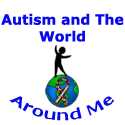Salicylate.... A problem among us all
>> Monday, December 15, 2008
I was lucky enough to receive a packet from the Feingold Association Of the United States. Inside I found a whole new perspective on how companies alter foods with modern technology. Salicylate sensitivities also a common with children who have ADHD and/or autism, but anyone can have a sensitivity to it. My children suffer from both ADHD and autism. There are many symptoms of a salicylate intolerance. I found a good list of them at SalicylateSensitivity.com
Do you or your child ever have any of the following: Gets upset to easily; Distractible/short attention span; Impatient, doesn't seem to hear you; Aggressive or disruptive; Irritable, Difficulty sitting through a meal; Doesn't recognize danger; Nightmares/sleep difficulties; Bedwetting, daytime wetting; Runs, doesn't walk; Doesn't finish projects; Compulsively repeats actions; Talks too much or too loudly; Fights/argues; Overreacts to touch, sound, and lights; Accident-prone; Frequent or chronic physical complaints, such as headaches, stomach aches, asthma, hives, ear infections, or constipation and/or diarrhea. The list of symptoms I have provided to you is from a booklet I received from The Feingold Program, "This Child Needs Help." www.feingold.org 1-800-321-3287. Also, The Feingold Program uses foods and other products that are free of the following: Synthetic (artificial) colors: Synthetic (artificial) flavors; Aspartame (artificial sweeteners): Preservatives BHA, BHT, TBHQ; Aspirin and food which contain aspirin-like compounds called salicylates (such as apples, grapes, oranges, tomatoes). Yes, even too much vegetables and fruits can be harmful due to naturally occurring salicylates. After a favorable response has been established, the salicylate-containing foods may be reintroduced one at a time and tested for tolerance. As always, consult your doctor for more information. Something else I want to mention about food colorings. Most food colors are derived from petroleum, and contain lead, mercury, arsenic and a variety of other harmful chemicals. Research shows that all the artificial colors cause DNA changes at low doses, and can damage nerve development dramatically when combined with other additives. Again, this is taken from the booklet from the Feingold Association of the United States. You may also become a member of the Association if you wish to get total access to all of their information you may become a member at their website: Feingold Association of the United States
Have a wonderful day and I hope you will consider what you put into your diet when there is so much out there that can harm us. Please keep researching this subject elsewhere on the web and you will be amazed at what you find. Thanks for reading as always, and I hope to turn on a few light bulbs with such a dangerous subject.
I am updating on the Feingold diet. Talking with the national director of the Feingold Association, I am understand that this diet is a choice for you and your family. There are no reports of a test to calculate probable sensitivities. She has told me by email that and I quote," The essence of the Feingold diet is that you ingest more of the good stuff and less of the bad." The bad being the food colors, additives, salicylates, preservatives, and other modern day technological advances in enhancing a foods taste, texture, or life of the product. Up coming post will include some of the behaviors my children are having problems with. See you all soon.




0 special comments:
Post a Comment